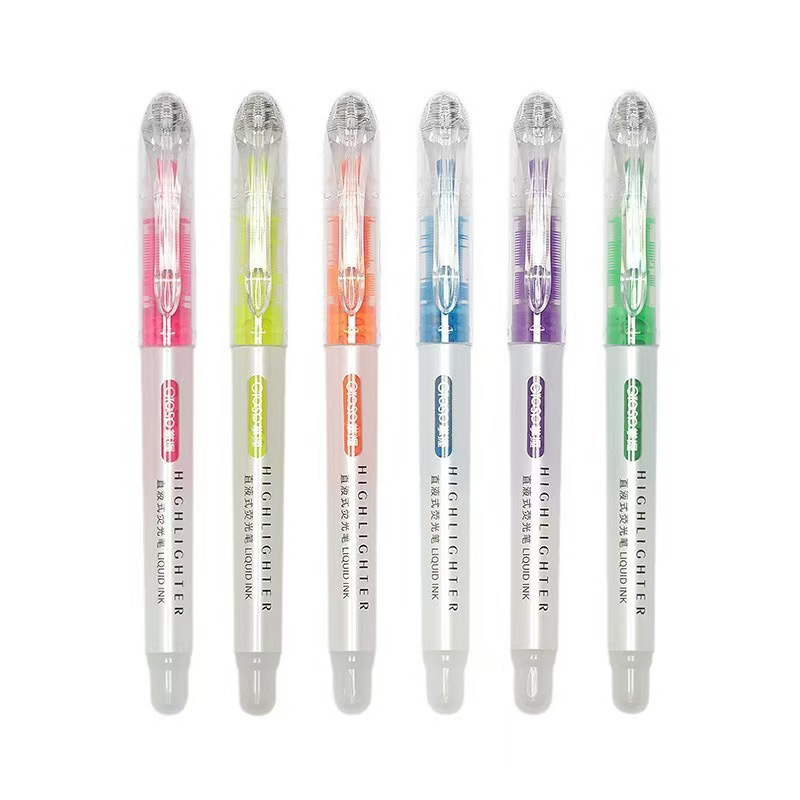From classrooms to boardrooms, highlighters have become indispensable tools for enhancing focus and comprehension. Traditionally used for marking important text in books or notes, highlighters have evolved far beyond their original function. As users seek tools that support productivity, creativity, and sustainability, the highlighter industry is responding with innovations in design, formulation, and application. No longer limited to fluorescent yellow, today’s highlighters offer a full spectrum of features that meet the growing needs of students, professionals, and creatives alike.
Shifting Toward Multi-Functionality and Specialized Use
While the core function of highlighters remains emphasis, the modern market is increasingly characterized by multi-functionality. Dual-tip highlighters, for example, offer both chisel and fine-point tips in a single tool—enabling users to switch between broad highlighting and detailed underlining. This versatility appeals to students and professionals who want to annotate quickly and efficiently without switching writing instruments.
Some highlighters now include built-in pens or erasers, blending the utility of writing and editing tools. Brands like Zebra and Pilot have introduced erasable highlighters that use thermo-sensitive ink, allowing users to correct mistakes without damaging the page. These hybrid tools cater to a growing audience of meticulous note-takers and journalers who value flexibility in their study and planning systems.
Expansion into Creative and Aesthetic Applications
A major growth driver for the highlighter market has been its adoption in creative fields and lifestyle-oriented stationery use. In bullet journaling, scrapbooking, and hand-lettering communities, soft-toned and pastel highlighters are over traditional neons. These colors offer a more muted, elegant appearance—ideal for decorating planner pages, mood boards, or goal-setting layouts.

brands like Mildliner, Stabilo, and Faber-Castell have capitalized on this demand with curated color sets designed to match specific moods, themes, or design styles. Highlighters are now often marketed not just as practical tools, but as creative accessories that contribute to visual storytelling, organization, and artistic expression.
Color psychology is playing a greater role in design decisions, too. Brands are incorporating calming hues like blues and greens for academic use, energizing tones like orange and coral for business planners, and warm shades like lavender and rose for creative journaling—aligning functionality with emotional intent.
Innovation in Ink Technology
Highlighter ink has traditionally been water-based, but recent advancements in ink technology are transforming product performance. Smear-resistant formulas are now widely available, specifically designed to prevent ink from bleeding or blurring text written in pen, pencil, or printer ink. This is particularly useful for left-handed users, who often struggle with smudging while writing.
Quick-drying, fade-resistant, and archival-quality inks have also been introduced to meet professional and academic needs. These inks are optimized for highlighter performance on different types of paper, including glossy textbooks, thin notebook pages, and recycled materials. Some highlighters are even safe to use on thermal paper—critical for legal, medical, or banking documents where preservation is key.
Sustainability as a Strategic Priority
Like other segments of the stationery industry, the highlighter market is undergoing a sustainability transformation. Brands are redesigning products and packaging to reduce environmental impact. Refillable highlighters, once rare, are now gaining momentum, particularly among eco-conscious consumers and institutions seeking sustainable office supplies.
Some manufacturers have introduced highlighters made from recycled plastics or biodegradable components, and many are moving away from single-use blister packs toward recyclable paperboard packaging. These efforts are driven by both regulatory pressure and consumer demand for greener alternatives.
Pilot’s “BeGreen” series and Stabilo’s “Green Boss” line exemplify this shift, offering high-performance highlighters that meet environmental standards without sacrificing ink quality or usability.
Institutional and Corporate Integration
Highlighters remain a staple in educational institutions, where color-coding and annotation techniques are integral to learning. Many schools and universities now recommend multi-color highlighter sets as part of standard student supplies, especially for subjects that require extensive reading and note-making.